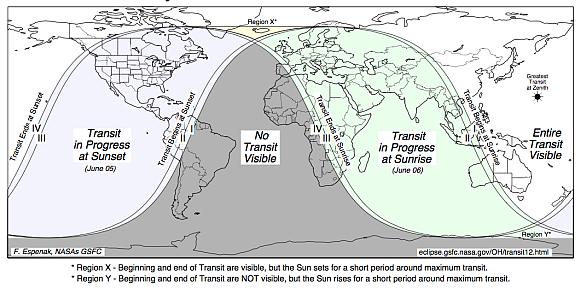 On June 5th and 6th, depending on where you are in the world, there will be the last transit of Venus, where the planet Venus visibly passes between the earth and the Sun, until the year 2017. The previous transit of Venus was in 2004. The transit has only been visible eight times since Galileo. NASA will feature a live streaming webcast of the transit from Mauna Kea, Hawaii from its site – 2012 Transit of Venus – Sun-Earth Day: Shadows of the Sun.
On June 5th and 6th, depending on where you are in the world, there will be the last transit of Venus, where the planet Venus visibly passes between the earth and the Sun, until the year 2017. The previous transit of Venus was in 2004. The transit has only been visible eight times since Galileo. NASA will feature a live streaming webcast of the transit from Mauna Kea, Hawaii from its site – 2012 Transit of Venus – Sun-Earth Day: Shadows of the Sun.
Transit of Venus 2012: How to view once-in-a-lifetime phenomenon
In 1716, Edmond Halley proposed that by observing the time at which the shadow of Venus crosses the Sun from various points on the Earth, it is possible to calculate the distance from the Earth to the Sun. Halley did not live to see his proposal put into practice but in 1761, 176 scientists watched the event from 117 spots around the globe. In 1768, Captain James Cook observed the transit from Tahiti.
The 2012 transit should be visible, cloud cover permitting, from most of Western Europe, parts of Africa, the Middle East and the United States. The transit will be visible in the United States on June 5th near sunset and at sunrise on June 6th in Europe, Africa and Asia.

It is possible to photograph the transit but care is required. See – Here’s how to photograph Venus and the sun safely.
Thanks to Phil Leon for contributing to this post.

Pingback: Remembering and Possibly Rediscovering Cook’s HMS Endeavour | Old Salt Blog – a virtual port of call for all those who love the sea